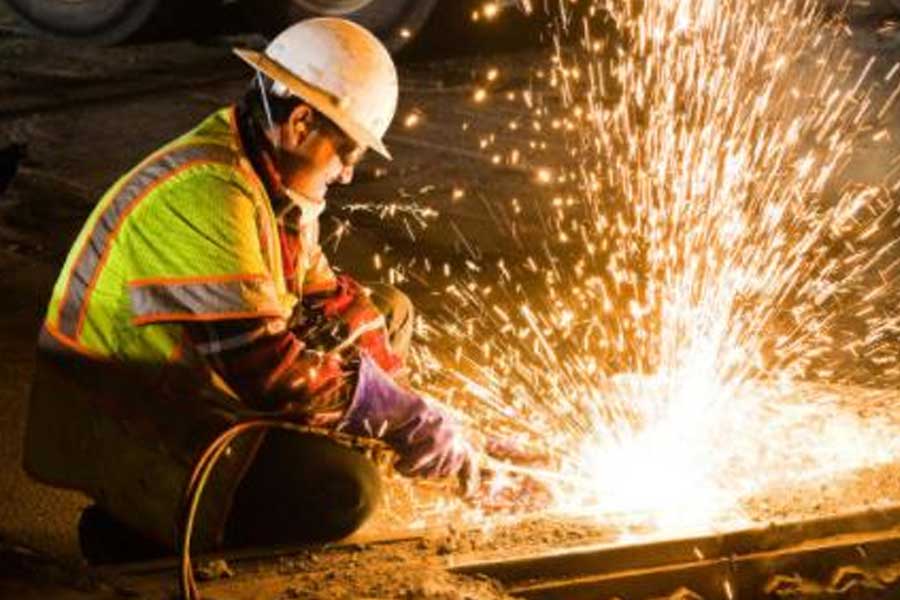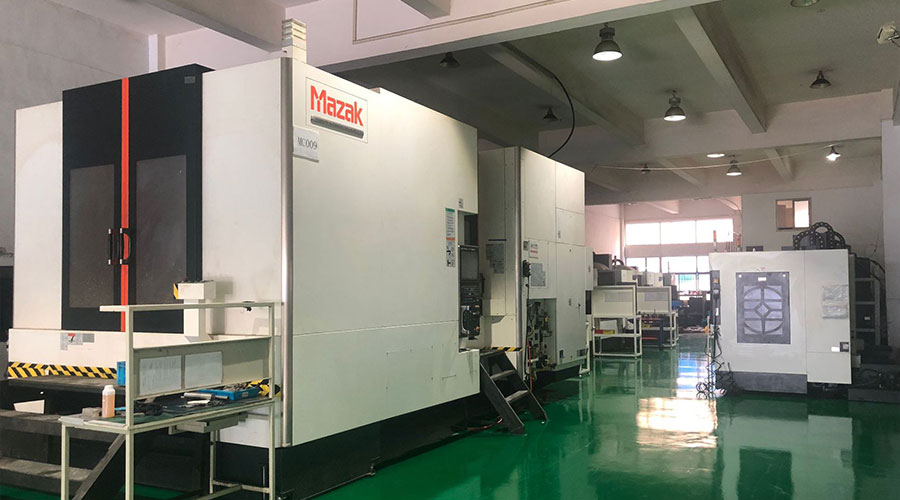Low-alloy steel is an alloy steel containing less than 5% of the total alloying elements in the steel. Its application is wider than medium alloy steel and high alloy steel. The main problems during welding of low-alloy steel structural steels are the cold cracks of the welded joints and the hardening tendency of the welded heat-affected zone. Different welding methods have different effects on the welded joints.
Low-alloy steel welding methods include: electrode arc welding, submerged arc welding, argon tungsten arc welding, melting electrode argon arc welding, CO2 gas shielded welding, electroslag welding and brazing, etc. The welding method used depends on the product structure and plate Thickness, performance requirements, production conditions, etc. are determined. The selection principle of welding materials for low alloy steel is generally handled according to the principle of equal strength, and the toughness, plasticity and crack resistance of the weld are comprehensively considered, as long as the strength of the weld metal is not lower than or not higher than the lower limit of the base metal.

When low-alloy steel is welded, it is usually preheated before welding, which is beneficial to reduce the speed of the cold zone after welding, avoid hardening structure, reduce welding stress, and is an effective measure to prevent cracks; it also helps to improve the structure and performance of the joint. The commonly used process measures for welding low-alloy high-strength structures, the preheating temperature of steel depends on factors such as the composition of the steel, the thickness of the steel, the shape of the welded structure, the degree of restraint, and the ambient temperature. Generally, the preheating temperature is 100~200℃, but for small parts and thin plates, preheating is not necessary. For post-weld heat treatment, the tempering temperature of electrode arc welding is 600~650℃; electroslag welding is normalized at 900~980℃ and tempered at 600~650℃.
The determination of welding parameters, that is, the size of the heat input depends on the embrittlement and cold crack tendency of the superheated zone. Due to the different embrittlement and cold crack tendency of various steels, the requirements for welding heat input vary greatly. When the welding carbon content is low, there is no strict control on the heat input, but a smaller heat input is better.
When the welding carbon content is higher, the heat input should be higher. Because the low alloy high-strength steel with higher strength grade has a higher hardenability tendency, a larger heat input should be used, but it should not be too large, otherwise it will increase. Tendency to embrittlement in large coarse grained areas. For example, the welding heat input of 16MnR steel is not strictly controlled because the heat-affected zone of this steel has a small tendency to embrittlement, but for steel containing V, Nb, Ti and other trace alloying elements, smaller welding should be used Line energy.
For low-alloy steels with higher content of carbon-based alloying elements and higher yield strength, such as 18MnMoNbR, because this steel has a greater tendency to harden, and the tendency to overheat in its heat-affected zone should be considered, a smaller heat input should be selected. At the same time, measures such as preheating before welding and timely heat treatment after welding must be added. In short, it is safer to use pre-weld preheating and post-welding heat treatment when welding low alloy steel, and minimize the heat input during the welding process.
Low-alloy high-strength steel can be divided into hot-rolled steel, normalized steel, low-carbon quenched and tempered steel, and medium-carbon quenched and tempered steel according to the strength level and heat treatment state. When welding low-alloy high-strength steel, the selected electrode has a very important influence on the properties of the weld metal.
Selection of low-alloy high-strength steel electrodes
Low-alloy high-strength steel welding is also based on the strength level of the steel to select welding rods, and consider the selection of welding rods based on factors such as the weldability of the base metal, the size of the welding structure, the shape of the groove, and the force.
When the ambient temperature is low, the cooling rate is fast, and the welded joint is prone to cracks, the welding rod whose strength is one level lower than that of the base metal is selected.
①Select welding rod for hot-rolled and normalized steel
The main basis is to ensure that the mechanical properties such as the strength, plasticity and impact toughness of the welded metal match the base metal, and the chemical composition of the weld metal is not required to be consistent with the base metal.
For welding thick and large parts, in order to prevent welding cold cracks, the principle of “low-strength matching” can be adopted, and the welding rod with the strength of the weld metal lower than the strength of the base metal can be selected.
②Choose electrodes for welding low-carbon quenched and tempered steel
Low-carbon quenched and tempered steel has a relatively high tendency to produce cold cracks during welding, so it is particularly important to strictly control the hydrogen in the weld metal. Therefore, low-hydrogen or ultra-low hydrogen electrodes should be used for welding low-carbon quenched and tempered steel.
③Choose electrode for welding of medium carbon quenched and tempered steel
Medium-carbon quenched and tempered steel has a high carbon content. In order to ensure the plasticity, impact toughness and strength of the weld metal, and improve the crack resistance of the weld metal, a low-carbon alloy system electrode should be selected to minimize the sulfur in the weld metal. , Phosphorus impurity content.
For components that require heat treatment after welding, the chemical composition of the weld metal should be similar to the base metal.
Link to this article: What method should be used for welding low-alloy high-strength steel? How to choose welding rod?
Reprint Statement: If there are no special instructions, all articles on this site are original. Please indicate the source for reprinting:https://www.cncmachiningptj.com/,thanks!
 PTJ® provides a full range of Custom Precision cnc machining china services.ISO 9001:2015 &AS-9100 certified. 3, 4 and 5-axis rapid precision CNC machining services including milling, sheet metal to customer specifications,Capable of metal & plastic machined parts with +/-0.005 mm tolerance.Secondary services include CNC and conventional grinding, laser cutting,drilling,die casting,sheet metal and stamping.Providing prototypes, full production runs, technical support and full inspection.Serves the automotive, aerospace, mold&fixture,led lighting,medical,bicycle, and consumer electronics industries. On-time delivery.Tell us a little about your project’s budget and expected delivery time. We will strategize with you to provide the most cost-effective services to help you reach your target,Welcome to Contact us ( [email protected] ) directly for your new project.
PTJ® provides a full range of Custom Precision cnc machining china services.ISO 9001:2015 &AS-9100 certified. 3, 4 and 5-axis rapid precision CNC machining services including milling, sheet metal to customer specifications,Capable of metal & plastic machined parts with +/-0.005 mm tolerance.Secondary services include CNC and conventional grinding, laser cutting,drilling,die casting,sheet metal and stamping.Providing prototypes, full production runs, technical support and full inspection.Serves the automotive, aerospace, mold&fixture,led lighting,medical,bicycle, and consumer electronics industries. On-time delivery.Tell us a little about your project’s budget and expected delivery time. We will strategize with you to provide the most cost-effective services to help you reach your target,Welcome to Contact us ( [email protected] ) directly for your new project.
Link to this article:What method should be used for welding low-alloy high-strength steel? How to choose welding rod?
Reprint Statement: If there are no special instructions, all articles on this site are original. Please indicate the source for reprinting.:Cut Wiki,Thanks!^^
